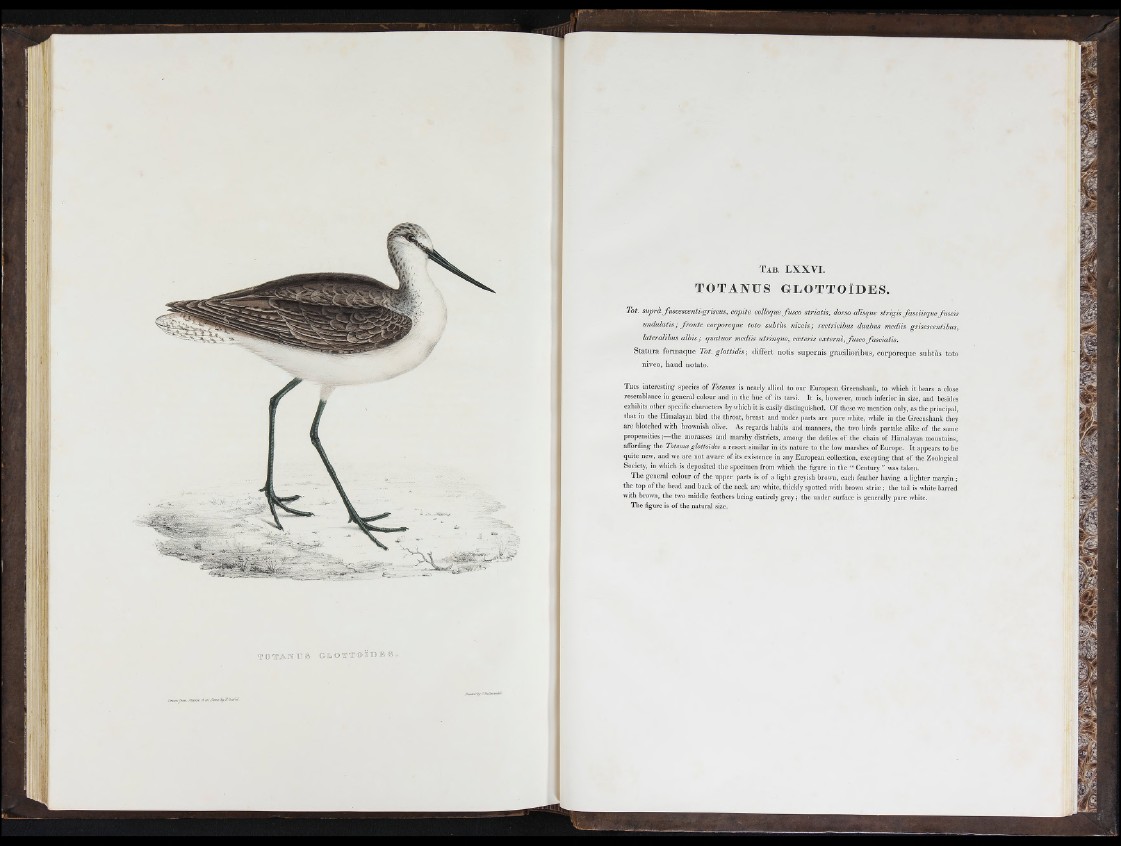
7 T Y l .> T r S '& L O T T O Ï B E , !
Ï A B . L X X V I .
TOTANUS GLOTTOÏDES .
T o t. s u p rà fm c e s c e n ti-g r is e u s , c a p ite colloque fu s c o s tr ia tis , dorso alisque s tr ig is fa s c iis q u e fu s c i s
u n d u la tis ; f r o n t e corporeque to to su b tu s n iv e is ; re c tric ih u s duabus m ed iis g rise sc en iib u s,
la te ra lib u s alb is ; q u a tu o r med iis u trm q tie , coe te ris e x te rn é , fu s c o fa s c ia tis .
S t a t u r a f o rm a q u e T o t. g lo ttid is ; tlifF e r t n o t i s s u p e r n i s g r a c i l io r ib u s , c o r p o r e q u e s u b t ü s to to
n iv e o , b a u d n o t a to .
T his interesting species of Totanus is nearly allied to our European Greenshank, to wliich it bears a close
resemblance in general colour and in tbe hue o f its tarsi. It is, however, much inferior in size, and besides
exhibits other specific characters by which it is easily distinguished. O f these we mention only, as the principal,
that in the Himalayan bird the throat, breast and under parts are pure wliite, while in the Greenshank they
are blotched with brownish olive. As regards habits and manners, the two birds partake alike of the same
propensities ;— the morasses and marshy districts, among the defiles o f the chain of Himalayan mountains,
affording the Totanusglottoides a resort similar in its nature to the low marshes o f Europe. It appears to be
quite new, and we are not aware of its existence in any European collection, excepting that o f the Zoological
Society, in which is deposited the specimen from which the figure in the “ Century” was taken.
The general colour of the upper parts is of a light greyish brown, each feather having a lighter margin ;
the top o f the head and back o f the neck are white, tliickly spotted with brown striæ ; the tail is white barred
with brown, the two middle feathers being entirely grey; the under surface is generally pure white.
The figure is o f the n atural size.